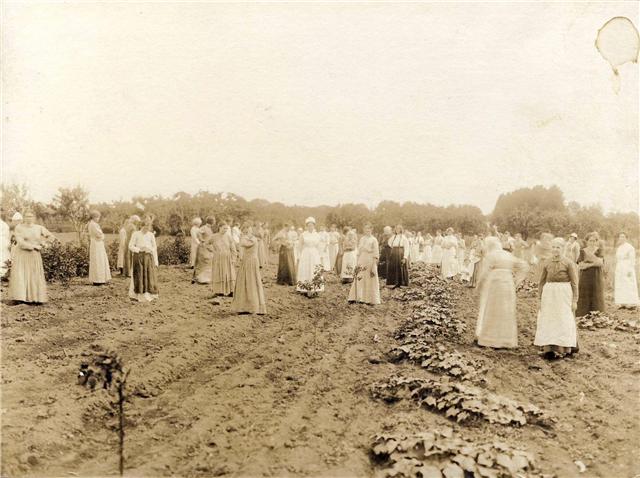Moral Therapy

Female
patients farming in the early 1900s. RMHCL
1
| 2
| 3
Prior to the 18th century, psychiatry was an unknown practice and people with mental illnesses were often treated inhumanely. This can be attributed to a lack of knowledge or understanding of their conditions as well as a fear of those who were mentally ill. In small villages, these individuals were cared for by family instead of the community. As a result, they were often locked up in isolated cages or were left to roam the streets. In larger cities, they were placed in hospitals for the sick, jails or workhouses. Asylums have existed since the middle ages but they only provided custody for these "raging" individuals without offering any form of treatment. With the influence of Enlightenment thinking in the 19th century, it was believed that a more humane form of treatment could also improve society as a whole. One of the most revolutionary developments during this time was moral therapy.
Many people have been credited for the development of this form of
treatment, including the influential Phillipe
Pinel and William Tuke of western Europe,
and Dorothea Dix in the
Once moral therapy was in practice in the late 1800s, it was not only dedicated to improving care, it also reflected prevalent middle class notions around work and social conformity. The idea was that to be a part of society one must have regular work habits and "fit in" as a perceived productive member of society. As a result, 19th century asylums maintained these societal norms and incorporated them into treatment plans with the expectation that they could eventually reintegrate patients back into society.
When the London Asylum for the Insane (LAI) opened in 1870, its first superintendents, Dr. Henry Landor and his successor, Dr. R. Maurice Bucke, were both great supporters of this practice for improving the well-being of patients. They believed patients could be cured by participating in forms of treatment that emulated societal norms; the three main components being labour, amusement, and proper diet. However, this treatment was, at times, difficult to put into practice as the population of the Asylum became overcrowded.
As mental health care evolved, the fundamental ideals of moral therapy
continued to be applied, leading to the development of occupational therapy
after the First World War.